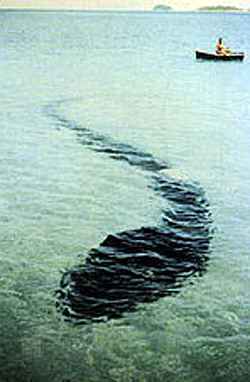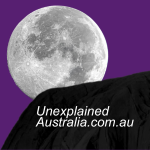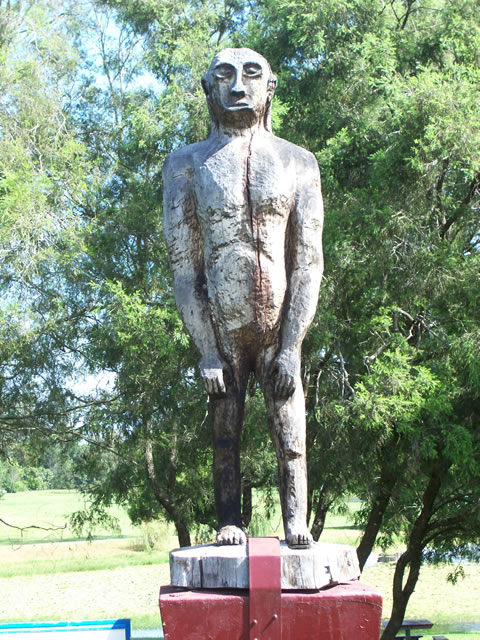
Hook Island lies just off the coast of Queensland on mainland Australia, situated in the Coral sea. The island is part of a group of islands known as the Whitsunday’s. The photograph of the Hook Island Monster is one of Australia’s most famous and enduring Sea Monster images.
In the summer of 1964, Frenchman Robert Le Serrec, and his family purchased and motorboat and decided to stay on the island for several months. Whilst crossing Stonehaven Bay on December the 12th. Robert’s wife noticed an odd object on the bottom of the lagoon. It was a massive 30ft long and was shaped like a tadpole.
Several photos were taken of the apparent monster as they moved closer. Le Serrec and his mate, de Jong who was accompanying the family, eventually summoned up enough courage to jump in the water with the intent of filming the creature.
As the approached the monster, they now estimated that it was more like 75-80ft in length. Initially they assumed the animal was dead but as they got closer, and Serrec began filming the serpent opened its mouth and started moving towards them. Obviously startled, they returned to the safety of their boat. By the time, they reached their boat, the creature had fled.
They reported seeing a wound on the right side of the creature, they surmised that the creature may have been wounded by a ships propeller and it taken refuge in the shallow lagoon.
Serrec described the creature as having eyes on the top of its head (a little unusual for a sea creature), which were pale with slit shaped pupils. It was mainly black in colour with traverse stripes. Its skin appeared smooth in texture. No fins, spines were visible and no teeth were described.
The photo of the Hook Island Sea Monster is widely regarded as a hoax. Many claim that the image is “photoshopped” however, as the image was taken in 1964 this is easily refuted.
Other explanations suggest, the creature could be a Giant Swamp Eel from the Synbranchidae family. However, these types of eels rarely grow larger than 150cm in length. Interestingly they lack pectoral and pelvic fins, which is consistent with Serrec’s description.
Many point to a deliberate hoax perpetrated by Serrec to earn money from photo royalties. In which he used plastic sheeting weighed down by sand to create the mysterious shape.
Other suggestions are schools of fish which randomly created the image.
One obvious explanation could be seaweed, leaves or other debris which naturally created shape which is interpreted as a sea creature. I have seen this many times myself in Australia in lakes and inlets.
Rohan@zoologyrohan on his twitter page, demonstrates this in his photo below:
https://twitter.com/zoologyrohan/status/662086696595406848
Sources:
Wikipedia.com



